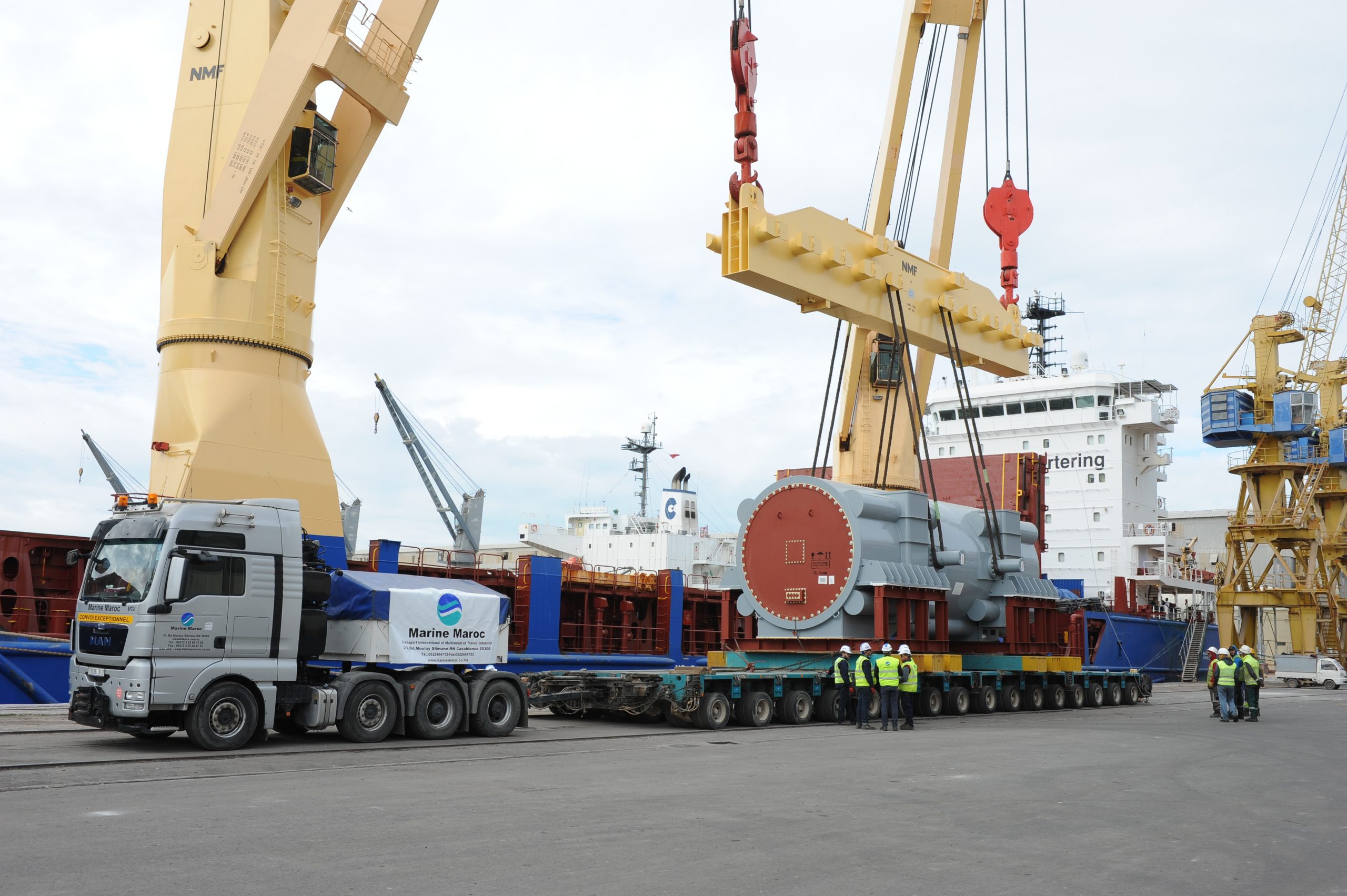Exceptional transport is a key aspect of Marine Maroc’s services, providing large-scale logistical solutions for transporting heavy, oversized, or delicate loads that require a specialized approach.
Logistical Challenges of Exceptional Transport:
Exceptional transport involves the movement of equipment, structures, or goods that cannot be transported by conventional means due to their size, weight, or shape. This type of transport requires meticulous planning and route management, often outside of standard road networks, with specific adjustments made to ensure the safety and efficiency of the operation.
Planning and Permits:
The planning of exceptional transports includes obtaining the necessary permits to circulate on public roads. This involves complex administrative procedures, feasibility studies for routes, and obtaining exemptions. Marine Maroc ensures compliance with local and international regulations, proactively addressing any potential obstacles, whether geographical or legal.
Specialized Logistics:
To manage the constraints associated with exceptional transport, tailored logistics are implemented. This includes the use of specialized vehicles such as heavy-duty carriers, modular trailers, as well as lifting and handling equipment. These specific tools allow for the safe and efficient transport of heavy and oversized loads under optimal conditions.
Safety and Risk Management:
As with project engineering, safety is central to exceptional transport. Each stage of the transport, from loading to delivery, undergoes a risk assessment. Safety measures are put in place to protect infrastructure, the transported goods, and the personnel involved in the operation.
Coordination and Communication:
The success of exceptional transport also depends on smooth coordination between all stakeholders, including local authorities, transport companies, and on-site teams. Clear and continuous communication throughout the process ensures optimal management of unforeseen events, guaranteeing adherence to deadlines and safety protocols.


